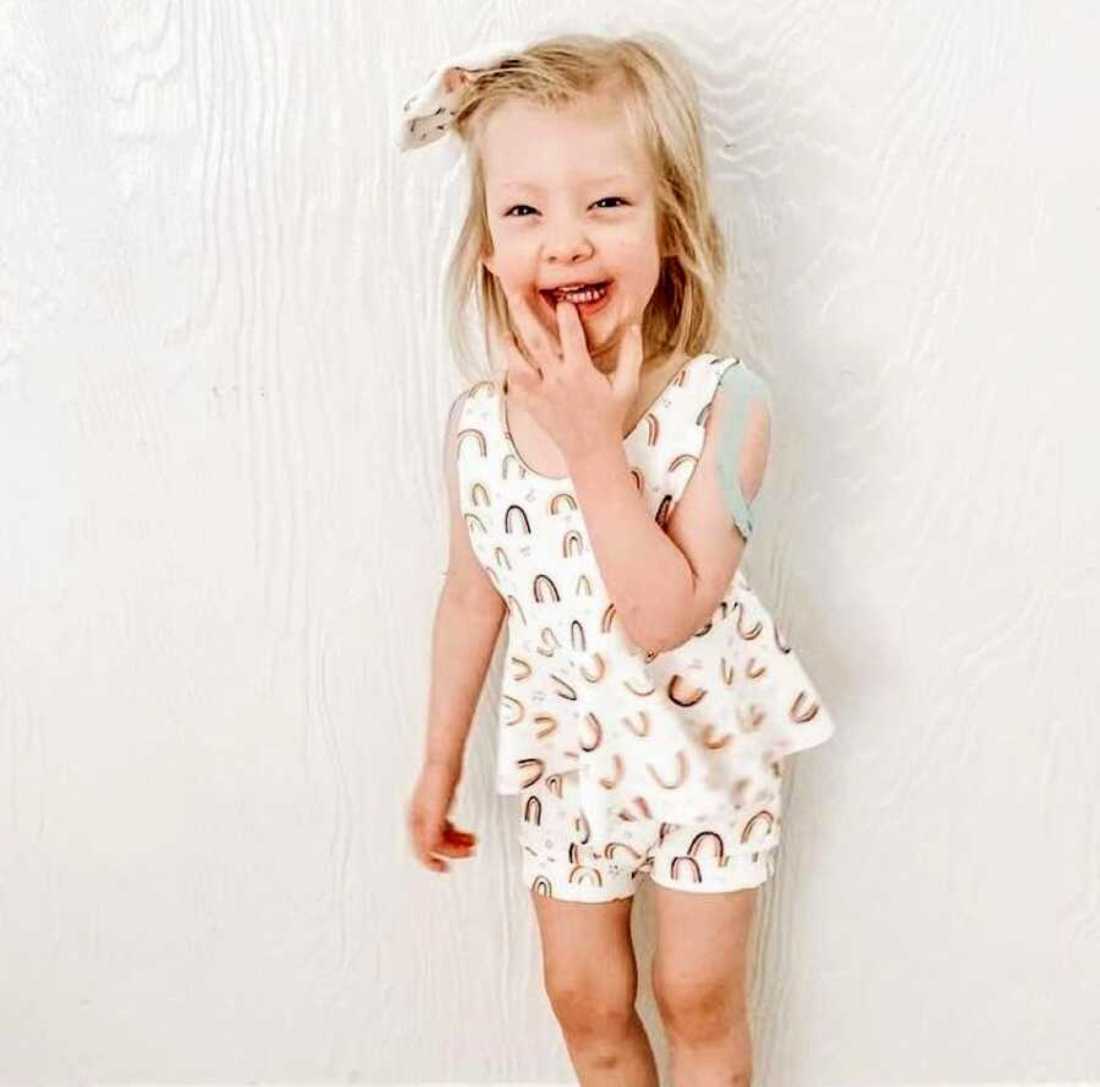
Can we talk real quick about something?
There’s a huge difference between using someone’s diagnosis or disability to describe that person and using someone’s diagnosis or disabilities to define them.
Describing phrases:

The boy who uses a wheelchair.
The girl with special needs.
The person with autism.
The girl with Down syndrome.
Defining phrases:
The handicapped boy.
The special needs girl.
The autistic kid.
The Down syndrome girl.
Does that second list make you cringe? Me, too.

It’s important to use people-first language. It puts the PERSON before the disability and describes what the person has, not who the person is.
I have a daughter with Coffin-Siris syndrome. I don’t have a Coffin-Siris syndrome daughter.
I have a daughter with special needs. I don’t have a special needs kid.

There is so much more to Charley than just her diagnosis. It’s a part of her, but it does not define her.
Charley is spunky, hilarious, and loves to smile and make people laugh. She can be sneaky and charming and she’s smarter than we give her credit for.
She loves fiercely and works really hard to do everything she is able to do. She inspires me daily and is a light and a blessing in this often dark world.
This essay was republished with permission and was written by Madeline Webb. You can follow her journey on Instagram and Facebook.



